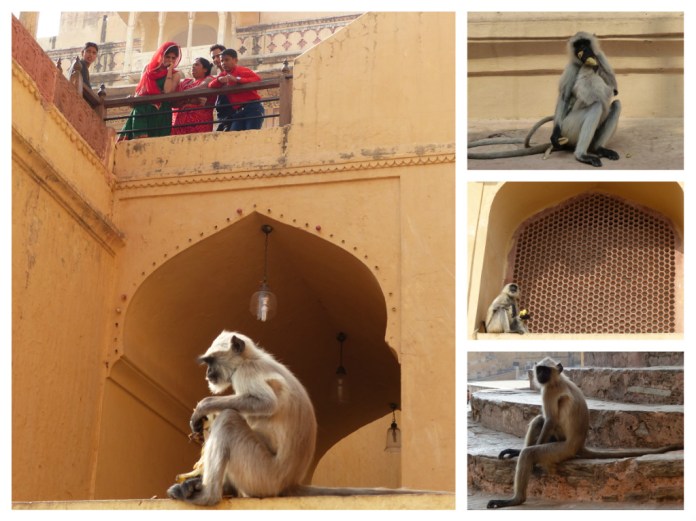
After Goa, we only had one full day left in Delhi. There were many things in Delhi that I still wanted to see, but unfortunately, we just didn’t have enough time to see them all. At that point, everything we had seen in Delhi had all been in New Delhi. Therefore, I knew we had to take this final opportunity to explore Old Delhi. We decided this would be an adults-only adventure so we paid our friends’ nanny, Beena, to watch Ella for the day so we could have a bit more freedom exploring. And Ella was having so much fun with Anya and Elia that she didn’t even realize we were gone.
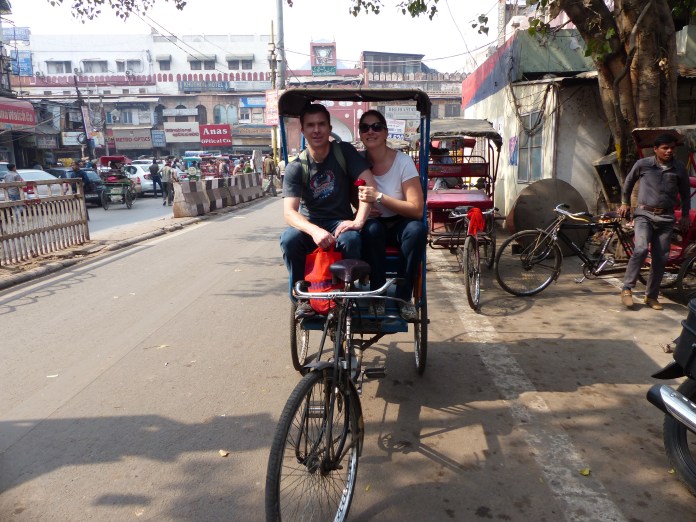
Old Delhi is exactly how I had imagined India would be. Crowded and chaotic, but alive and captivating.

Wires? What wires…? I didn’t even notice.
Since it was our last day, we dove right into the heart of Old Delhi. Chandni Chowk is the main street of Old Delhi and it is the best place to immerse yourself in the “real India.” The area is home to one of the oldest and busiest markets in India, leaving the streets congested with cars, rickshaws, motorcycles, and pedestrians. The best way to tour Old Delhi is to hire a rickshaw driver to navigate you through the narrow streets. Tip: When hiring a rickshaw, ask up front what the fee will be and select the driver that responds, “as you like.” This is the driver that lets you pay what you think is deserved. I only saw this practice in Old Delhi; the rest of India quadrupled their rates for tourists.

“As you like”
We found a driver who gave the proper response and we began our rickshaw tour through the busy streets. The market is huge! And it isn’t a tourist trap market like, let’s say, The Grand Bazaar in Turkey. This market is where the locals go for everything from spices to shoes, and jewelry to electronics. Each alley is dedicated to a particular product, so if you are looking for bangles…there’s an alley for that. If you are looking for wedding saris…there’s an alley for that.

There’s an alley for that
Mad props to our driver who was able to navigate through a sea of people and rickshaws.
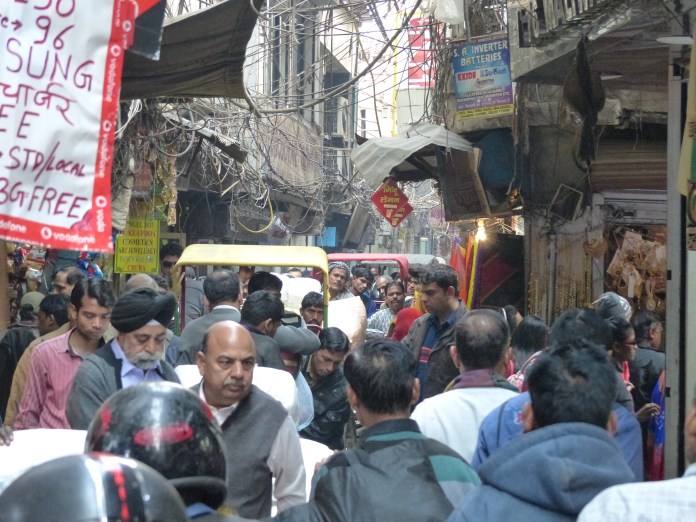
No visit to Old Delhi is complete without checking out the spice market. Our driver led us up several flights of stairs above the market streets to where the wholesalers bring their huge burlap sacks of spices to be sorted and sold at the market below.


As we were making our way to the top, everyone was coughing…I mean, really hacking away. I thought, “Great, now I’m going to get sick too.” And then it happened…I started coughing. How is that even possible? I can’t be sick already! Of course I wasn’t sick, but my throat was burning, I couldn’t stop coughing, and I almost felt like I was choking. It was then that our driver pointed out the overflowing bags of chili peppers everywhere you looked. They all seemed to be intact, yet my nose and throat were burning as if they had been placed in a giant food processor and then pumped through the AC unit. Well that sounds ludicrous because of course, there was no AC unit!

We spent the entire day in the market with our rickshaw driver. We basically shopped all day. And even Rob, who generally hates a day full of shopping, thoroughly enjoyed himself. Maybe that is because he got to pose for this sweet rickshaw pic?
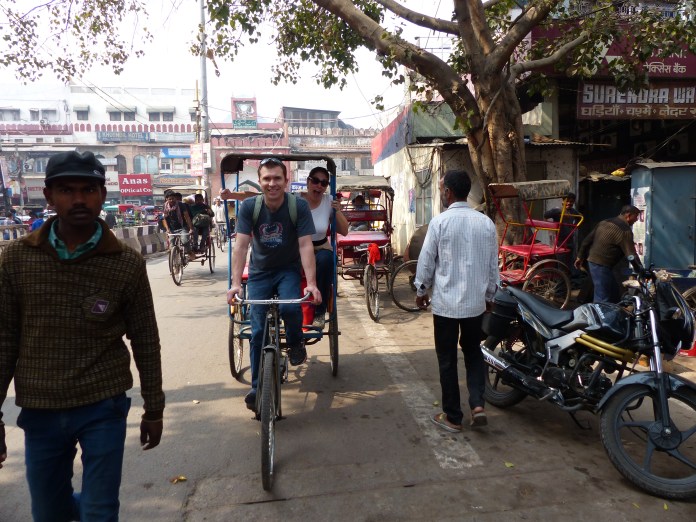
But I think he was jealous he didn’t get to pose for the upgraded tuk tuk pic.
There is much more to see and do in Old Delhi than just shopping. For example, you can visit the Jama Masjid, India’s largest mosque. Or you can tour Red Fort. Unfortunately, my shopping spree didn’t leave us enough time for more than a couple snapshots. But we were very happy with how we chose to spend our final day in Delhi. And our rickshaw driver was even happier because we willingly and happily (way) overpaid him for his services.

Jama Masjid
















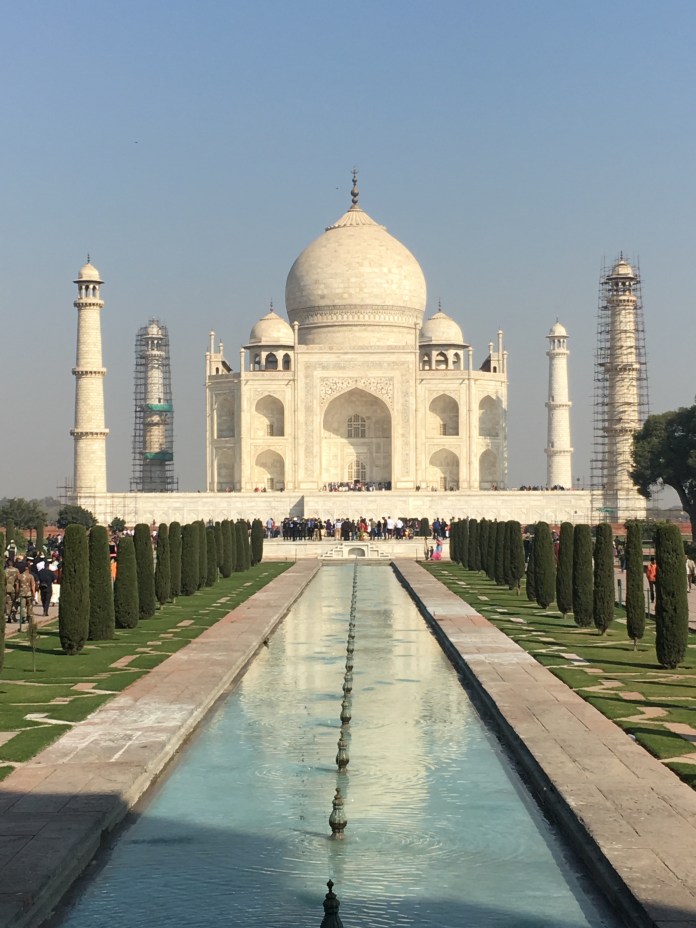 Taj Mahal means Crown Palace, but it is actually not a palace at all, nor was it ever intended to be a palace. The Taj Mahal is a mausoleum; built to honor Emperor Shah Jahan’s favorite wife, Mumtaz Mahal. (I’m no expert in polygamous relationships, but I imagine the other wives might have been a tad bitter or a bit jealous.)
Taj Mahal means Crown Palace, but it is actually not a palace at all, nor was it ever intended to be a palace. The Taj Mahal is a mausoleum; built to honor Emperor Shah Jahan’s favorite wife, Mumtaz Mahal. (I’m no expert in polygamous relationships, but I imagine the other wives might have been a tad bitter or a bit jealous.)







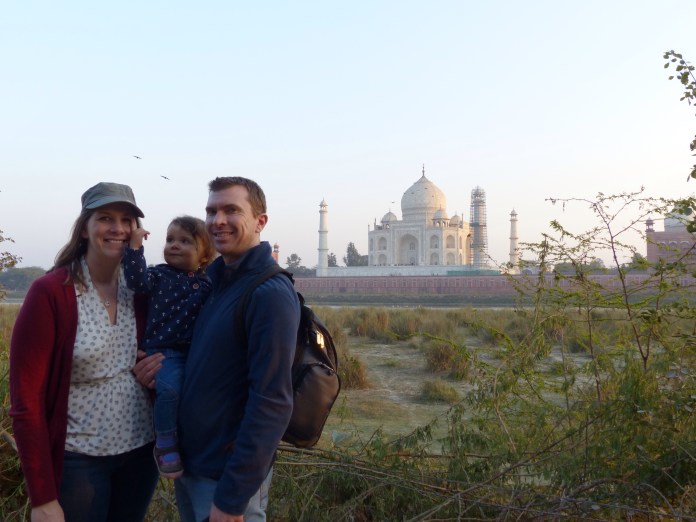

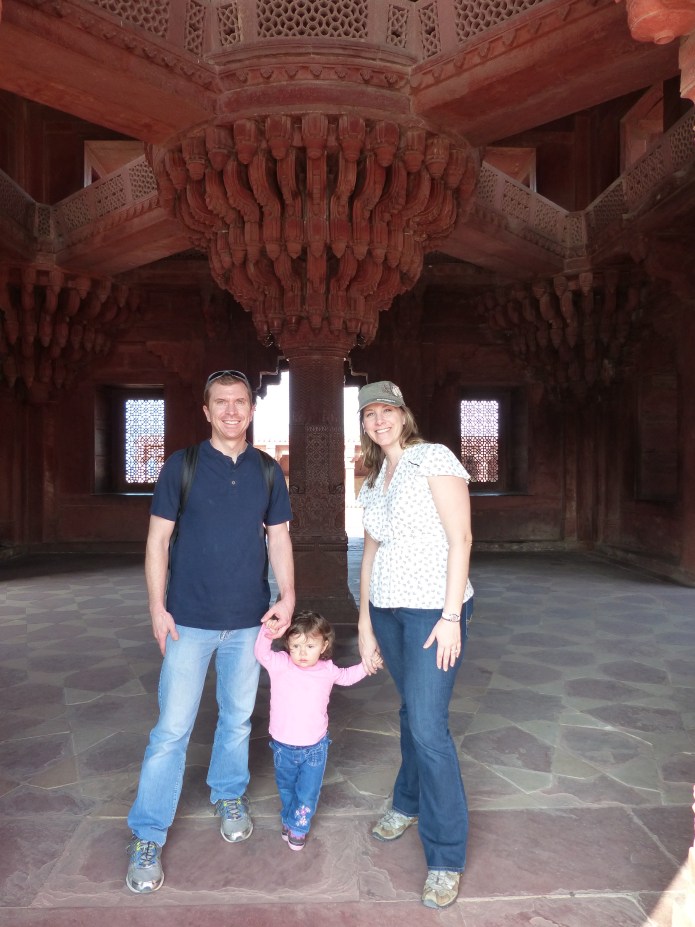






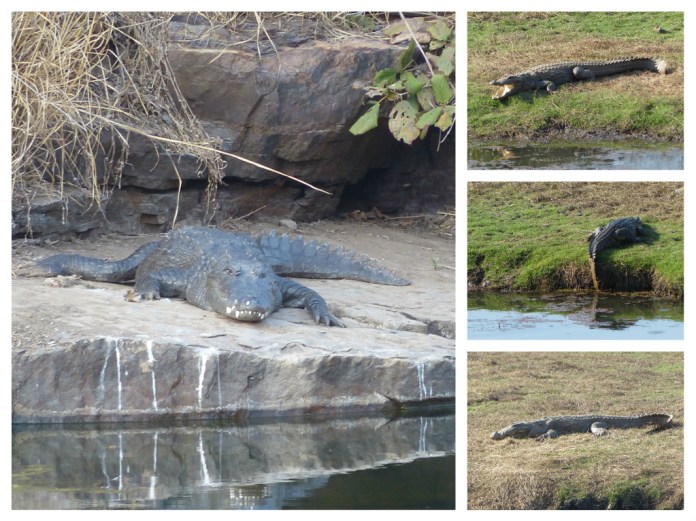

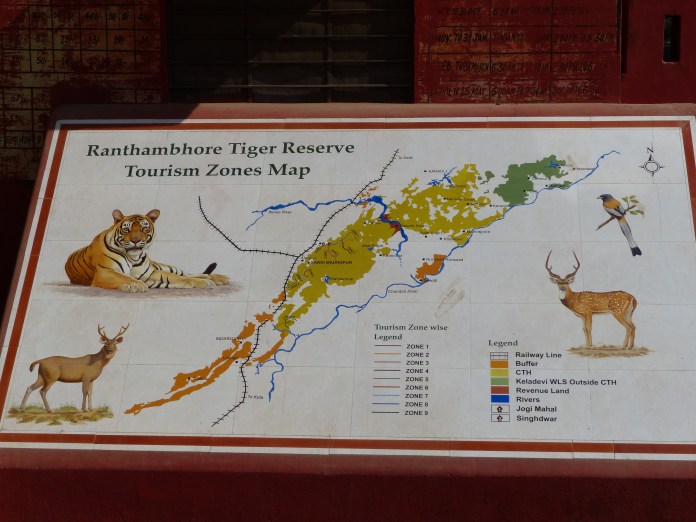 Note to tourists: You can book your tiger safari online
Note to tourists: You can book your tiger safari online 





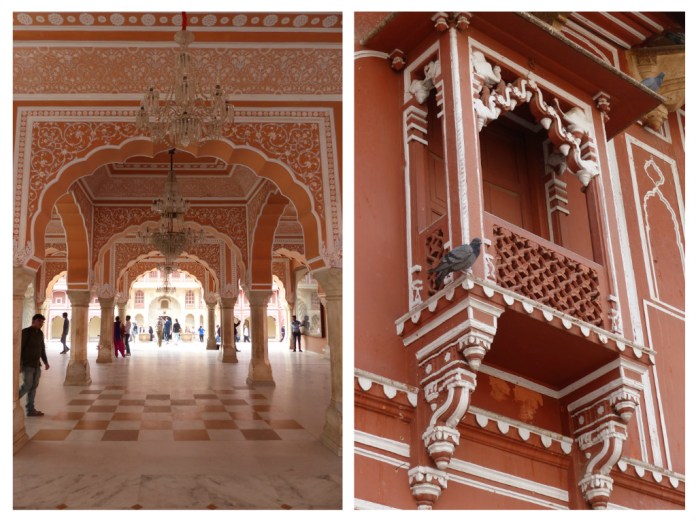

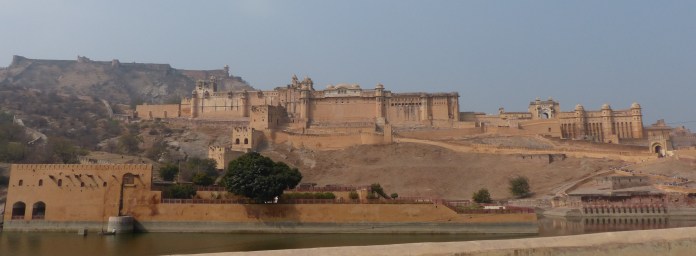
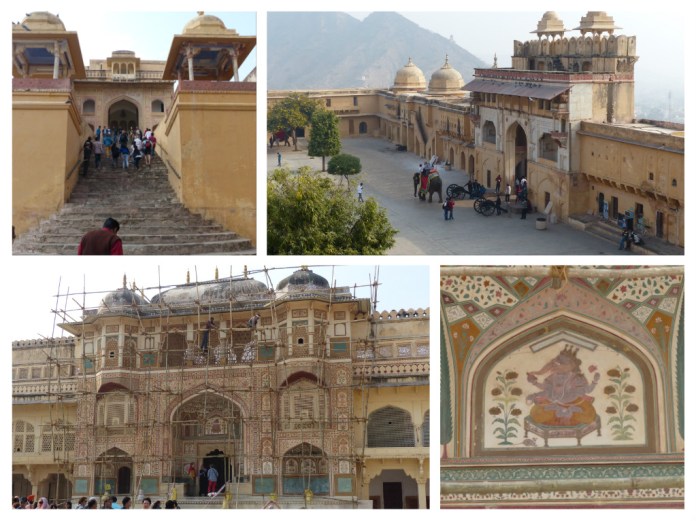 The main entrance to the fort is through the Sun Gate (pictured above: top right) which leads to Jaleb Chowk, the first main courtyard. This courtyard is where armies would hold their victory parades upon return from battle. The stairway of Jaleb Chowk (pictured above: top left) leads to the main palace grounds. The Ganesh Gate is the entry to the private palaces of the Maharajas (pictured above: bottom left). Ganesh is the Hindu God who removes all obstacles in life (pictured above: bottom right). Above Ganesh Gate are latticed windows where women of the royal family could watch functions below without being seen.
The main entrance to the fort is through the Sun Gate (pictured above: top right) which leads to Jaleb Chowk, the first main courtyard. This courtyard is where armies would hold their victory parades upon return from battle. The stairway of Jaleb Chowk (pictured above: top left) leads to the main palace grounds. The Ganesh Gate is the entry to the private palaces of the Maharajas (pictured above: bottom left). Ganesh is the Hindu God who removes all obstacles in life (pictured above: bottom right). Above Ganesh Gate are latticed windows where women of the royal family could watch functions below without being seen.

